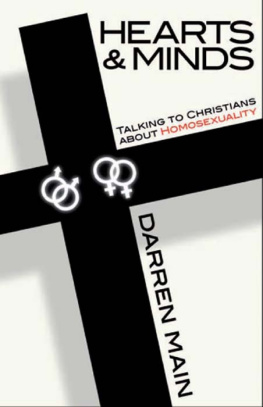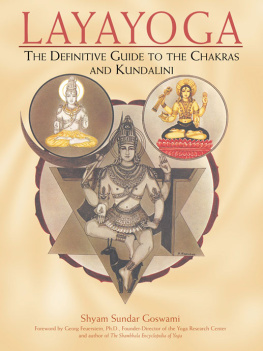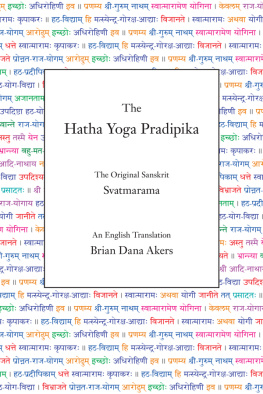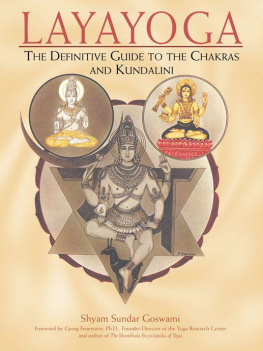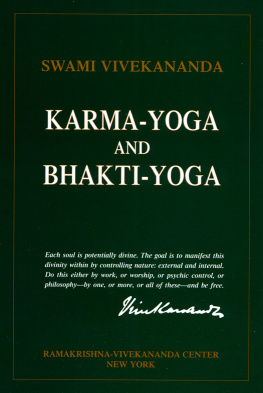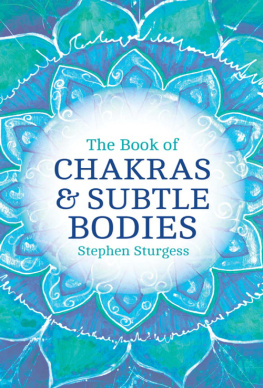
Yoga and the Path of the Urban Mystic
By Darren Main
Copyright 2010 Darren Main
ISBN: 9781617923753
Discover other titles by Darren Main at www.DarrenMain.com
Spiritual Journeys along the Yellow Brick Road
Hearts & Minds: Talking to Christians about Homosexuality
Inner Tranquility: A Guide to Seated Meditation
The Yogi Entrepreneur: A Guide to Earning a Mindful Living Through Yoga
Dedication
Dedicated to my mother, Kathy Flynn-Ascare and to my father, John Main.
Mom, your devotion to me has been unwavering and your unconditional love has been my greatest source of strength. Dad, your honesty and integrity have been my moral compass along this journey. Thank you both for making this book and everything I do possible.
Table of Contents
Hatha Yoga Prayer
Foreword
Authors Note
Introduction
Part One
Chapter One: Atman and the Ego
Chapter Two: The Illusion of Maya
Chapter Three: Kundalini and the Flow of Life
Chapter Four: Karma Yoga and Relationships as a Spiritual Practice
Part Two
Chapter Five: Yama-The Moral Restraints
Chapter Six: Niyama- The Observances
Chapter Seven: Asana- Sit
Chapter Eight: Pranayama- The Breath of Life
Chapter Nine: Pratyahara- Sense Withdrawal
Chapter Ten: Dharana- Concentration
Chapter Eleven: Dhyana- Witness
Chapter Twelve: Samadhi- Ecstasy
Conclusion
Glossary
Appendix
Hatha Yoga Prayer
I offer this practice to the Sadguru, The Teacher within all things
The Teacher that is the Prana (life energy) from which my body emerged.
The Teacher that sustains and nourishes me with each breath.
The Teacher whose lessons are in every life experience even pain and death.
May this practice open me to the wisdom of the Sadguru,
That my mind may know peace,
That my heart may know compassion,
And my life may extend peace and compassion to all beings.
Om Shanti, Om Peace
Darren Main
Forward
By Stephen Cope
In the summer of 1893, a young Indian Swami electrified American audiences at the First World Parliament of Religions with his discourses about the Science of Yoga. The 29-year-old Swami Vivekananda, whose arrival at Chicagos Columbian exposition was cloaked in mystery, held audiences of 7,000 spellbound with his descriptions of the fully alive human beingor jiva mukti, the soul awake in this lifetime. Yogis, he said, had discovered that all human beings have astonishing potentials of mind, body, and spiritpotentials which can be awakened through the practical science of liberation which he described in his talks.
Vivekananda quickly became Americans first yoga celebrity. After his triumph in Chicago, he traveled extensively around the United States, teaching the systematic path of awakening which he called raja yoga. Raja yoga, he claimed, is the epitome of all yoga psychologycombining all of the different schools of yogic practice, devotion (bhakti yoga), selfless service (karma yoga), the yoga of intellectual refinement (jnana yoga), and the yoga of postures and breathing (hatha yoga), into a methodical psychospiritual technology which is guaranteed to transform the human character, energy system and consciousness. Raja yoga is, he claimed, an exact science.
On that summer morning in Chicago, Vivekananda opened the door to yoga in America. Since that time, dozens of Indian yoga adepts have walked through itmost of them with a message very similar to Vivekanandas: all human beings have the potential to wake up in this lifetime, to become fully alive human beings.
Over a century later, yoga has taken America by storm. Recent surveys suggest that as many as 20 million Americans are now involved in some aspect of the practice of yogain health clubs, YMCAs, yoga centers, and private living rooms around the country. Not surprisingly, Americas first wave of enthusiasm for this ancient practice has centered around the practices of yoga postures (asana) and breathing exercises (pranayama). But thousands of American yogis have now begun to discover that these practices are inextricably linked to the entire science of transformation described by the young traveling swami over a century ago.
As Americans inevitably begin to lift the lid of Vivekanandas methodical science of liberation, many will find that it has great appeal. Its practical. Its non-religious. And, most importantly, it doesnt require retreat from the world. Quite the opposite: Yoga psychology transforms the most mundane activities of daily life into spiritual practices. The way we eat, breathe, move, dream, have sex, speak, work, all become opportunities for transformation and development.
In Yoga and the Path of the Urban Mystic, Darren Main has given us a wonderful doorway into the potentially complex world of raja yoga. His work provides us with a compelling but accessible Baedeker to the sometimes dense world of Indian metaphysics. It is a yoga commentary with a uniquely American voice. It is piquant, experience-near, real, contemporary and very sensitive to the reader for whom the world of Sanskrit terms and Indian ideas is completely new and foreign. Darrens work, like raja yoga itself, is precise and methodical in its approach to spiritual practice.
Yoga and the Path of the Urban Mystic is a welcome contribution to the burgeoning American literature on yogaa contemporary story which will help to take the views and practices of yoga more deeply into the journey initiated so many years ago by the visionary young Swami.
Stephen Cope
Lenox, Massachusetts
Stephen Cope is the author of Yoga and the Quest for the True Self and The Wisdom of Yoga . He is the Scholar in Residence at the Kripalu Center for Yoga and Health in Lenox, Massachusetts.
Authors Note
Throughout this book I make reference to various individuals within the context of stories and examples. While I have based these stories on real people and real situations, I have changed many of the names, circumstances and details of each story in an effort to respect the privacy of the individuals involved. In the few cases where I have not changed the identity of a person, I have obtained their permission or found mention of these persons and events within the public record.
Translation of Sacred Texts
Throughout this book, I quote a number of sacred texts from India. There are many wonderful translations of these texts available, each with its own perspective and wisdom. For consistency, I have chosen to quote from translations that will be most clear for the modern yogi. I would like to thank the following authors and publisher for allowing me to reprint small sections of their translations throughout this book.
The Bhagavad Gita Translated by Eknath Easwaran
Nilgiri Press 1985 www.nilgiri.org
The Upanishads Translated by Eknath Easwaran
Nilgiri Press 1987 www.nilgiri.org
The Yoga Sutra of Patanjali Translated by Chip Hartranft
Shambhala Publications 2002 www.shambhala.com
The Hatha Yoga Pradipika Translated by Brian Dana Akers
Yoga Vidya 2002 wwwyogavidya.com
The Gheranda Samhita Translated by James Mallinson
Yoga Vidya 2004 wwwyogavidya.com
Introduction
Those who aspire to the state of yoga should seek the self in inner solitude.
The Bhagavad Gita, 6:10
At 5:30 each morning, my stereo is programmed to wake me up. This morning I woke up to the soft sound of Krishna Das chanting his Devi Puja. [1] [References are located at the end of the book.] As the deep, rich sound of Krishna Das voice coaxed me out of a dream I cant quite remember and into a waking state, I considered going back to sleep and skipping my morning practice altogether. Yet something deep within pulled me out of bed.
Next page

